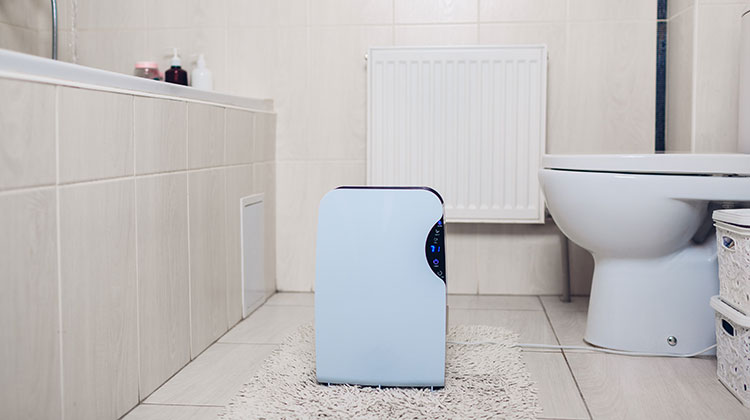
Do you require a dehumidifier for your home’s bathroom? The bathroom dehumidifier, like other dehumidifiers, is used to lower humidity levels in a room. According to the US Environmental Protection Agency (EPA), high relative humidity (more than 60%) is linked to mold in the home.
As you may know, household mold has been linked to a variety of issues. It may appear self-evident that homeowners would prefer to keep mold out of their bathrooms. Mold, after all, is unattractive and gives the impression that a bathroom hasn’t been cleaned in a long time. It also leaves an unpleasant odor in your bathroom. However, those are the least of the issues associated with bathroom mold. You’ll need a humidity control system to keep these molds in check.
You’re probably aware that household mold exposure has been related to various health issues, such as respiratory infections, asthma, and allergic reactions. Did you know that some mold-related health problems can endure a long time or be chronic, even after people have stopped being exposed to mold? Mold can also do a lot of harm to your house. It eats away at organic things like wood, destroying walls, ceilings, and floors in the process.
To understand more about how mold can harm your house, click here. Mold spreads quickly and readily, so mold that starts in your bathroom can quickly spread throughout your home. Mold removal is a time-consuming and expensive process, so making an effort to prevent decay from growing in the first place is well worth it.
Bathrooms are inherently warm and moist, making them ideal for mold growth. Bathwater can splash on the floor, and a hot shower can fill the entire bathroom with steam. There are also a lot of pipes that could leak or drip. Furthermore, bathrooms are frequently under-ventilated. Many bathrooms lack windows, have only one entrance, and that door may be closed most of the time.
Feel free to check if you want to find out what is the differences between bathroom dehumidifier vs exhaust fan.
A lack of airflow exacerbates mold growth in bathrooms. If your bathroom has an exhaust fan, use it every time you shower to reduce moisture in the air and eliminate the need for a dehumidifier. If you don’t have an exhaust fan, or if you’ve discovered mold despite using one, a dehumidifier can be a good option.
There are other things you can do to lessen the risk of mold in your bathroom besides using a dehumidifier for bathroom rooms.
- Bathrooms should not have carpets. Instead of carpeting, use tile or linoleum on the floors, and add throw rugs for added softness and warmth.
- If your throw rugs get wet, hang them to dry.
- Any spilled water should be wiped up as soon as possible.
- Squeegee the shower walls to speed up the drying process.
- When showering, make sure the shower curtain is closed to keep the floor dry. If the base does get wet, dry it as soon as possible.
- Spread the shower curtain out on the rod after you’ve finished showering so it can dry faster. If you have a shower door instead of a curtain, leave it open a few inches to allow more air to circulate inside the shower, which will help the walls dry faster.
- If you have one, turn on the exhaust fan while showering. Leave it on until all of the steam has disappeared in the room.
- Consider adding an exhaust fan in your bathroom if you don’t already have one. When it comes to enhancing ventilation and reducing mold, an exhaust fan can really help.
- After showering, leave the bathroom door open to allow for more airflow. If you live alone, you may want to keep the door slightly ajar while showering.
Even if you do all of these things, a dehumidifier may be required to avoid mold in the bathroom, mainly if your bathroom’s ventilation is inadequate or if your bathroom is prone to decay for some reason. Even if you have a decent dehumidifier in your bathroom, these are still helpful suggestions for preventing mold. While a dehumidifier can help prevent decay, it isn’t always practical.
When choosing a dehumidifier, consider the size of the area to be dehumidified as well as the amount of moisture present. Bathrooms are moist, but even a large bathroom is a cramped space. A huge dehumidifier isn’t required. Because most bathroom dehumidifiers are small and don’t store a lot of water, you’ll probably have to empty them once a week or so. To avoid overflowing, all dehumidifiers automatically turn off when they are full. So, if you are considering a bathroom dehumidifier, take your time and select the right one for you!

Related articles

Related stores
TBD
Let’s share!

Leave a Reply